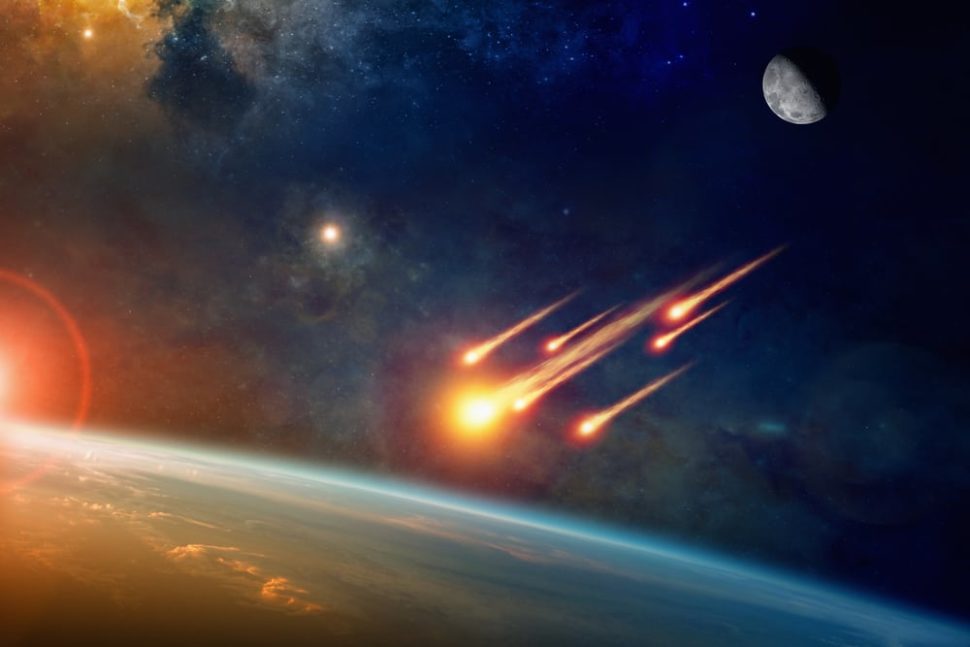Material blasted out into space during asteroid impacts on rocky exoplanets could hold chemicals, minerals, and other life biosignatures.
Over the years, scientists catalogued thousands of extrasolar planets, including weird worlds where life could thrive and showed that liquid water is way more common in the Universe while deepening their knowledge of life origins.
But they have yet to find the slightest evidence of life, either in the present or the past, anywhere they look.
Unfortunately, we don’t yet have the technological means that enable us to visit extrasolar worlds and do an up close and personal investigation.
Read More: New Discovery Furthers Proof of Possible Life on Mars
Spotting life ingredients is something, spotting “life” is something else. How would we mark a planet that’s many light-years away as hosting or having hosted life?
Asteroid Impact Ejecta on Exoworlds Could Hold Life Biosignatures
One way to find life on outer worlds is to study atmosphere looking for oxygen, whose presence is a strong indicator of past or present life.
If a planet’s atmosphere chemical makeup seems to be out of balance, that’s also a sign of biological activity on its surface.
While NASA’s TESS Telescope will carry on with Kepler and keep identifying exoplanets, the James Webb Space Telescope will be the first instrument capable of inspecting the atmospheres of these worlds.
Read More: Cryptocurrency Mining is Hampering the Search for Alien Life
The Webb telescope is due to launch in 2021. With this telescope, scientists will be able to trace not only oxygen but also nitrogen, carbon dioxide, methane and other chemicals and elements usually found when there’s biological processes going on.
A team from several European research institutions think there are other ways to mark a planet as habitable, and that by looking for life biosignatures in asteroid ejecta on rocky planets and moons.
Asteroid ejecta is the term given to the material that gets blasted out upon a meteorite event.
Gianni Cataldi, an astronomer at Stockholm University’s Astrobiology Center and leader of the study, explains their concept:
“First, the smaller the exoplanet, the more difficult it is to study its atmosphere. On the contrary, smaller exoplanets produce larger amounts of escaping ejecta because their surface gravity is lower, making ejecta from smaller exoplanet easier to detect. Second, when thinking about biosignatures in impact ejecta, we think primarily of certain minerals. This is because life can influence the mineralogy of a planet either indirectly (e.g. by changing the composition of the atmosphere and thus allowing new minerals to form) or directly (by producing minerals, e.g. skeletons). Impact ejecta would thus allow us to study a different sort of biosignature, complementary to atmospheric signatures.”
For example, the monster asteroid that slammed into Earth about 66 million years ago and wiped out the dinosaurs left a crater that’s 110 miles across, believed to be the Chicxulub crater in Yucatan (Mexico).
The impact blew debris into space, and altered Earth’s atmosphere, eventually causing the extinction of 75% of animal and plant species, including dinosaurs.
“We found that an impact of a 20 km diameter body produces enough dust to be detectable with current telescopes (for comparison, the size of the impactor that killed the dinosaurs 65 million years ago is thought to be around 10 km). However, studying the composition of the ejected dust (e.g. search for biosignatures) is not in the reach of current telescopes. In other words, with current telescopes, we could confirm the presence of ejected dust, but not study its composition,” said Cataldi.



















Comments (0)
Most Recent